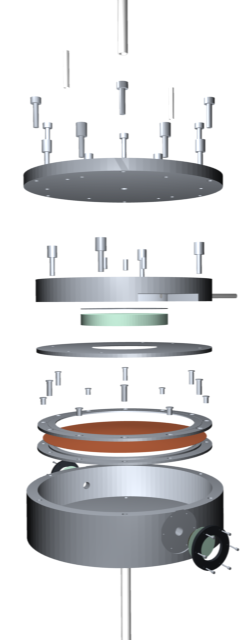Polymer structures

Stuart Prescott
Stuart joined the Polymers at Interfaces Group at the beginning of 2006 as a Marie Curie Research Fellow. He was previously at the University of Melbourne where he was studying the sonochemical production of polymer latices and light scattering from non-spherical nanoparticles as well as looking after the instruments within the Complex Fluids Characterisation Facility (AFM, DLS, Raman Microscopy, etc).
He completed his Ph.D. in 2003 through the University of Sydney (in conjunction with CSIRO Molecular Science and the Cooperative Research Centre for Polymers). This project included the first successful description of the living polymerisation technique "RAFT" in an emulsion polymerisation, along with a kinetic description of the RAFT-mediated polymerisation (through both population balance and Monte Carlo modelling).
Stuart's research interests include:
- synthesis and characterisation of novel polymer architectures
- interactions and behaviour of polymers at surfaces
- atomic force microscopy as a tool for understanding surface chemistry
His main area of research while at the University of Bristol is described below; Stuart's website contains further details of other on-going projects and a list of recent publications.
Surface structures of polymer solutions in confined geometries

A second-generation surface force style apparatus has been developed to probe the inter-surface and near surface structures under compressive forces. Systems of current academic interest which also have a substantial industrial impact include adsorbed and confined macromolecules, mesophases and amphiphiles in a variety of solution, melt and gel environments; the apparatus is designed to work in situ using neutron, X-ray and optical reflectivity. This section of the project is to commission the apparatus for neutron reflectivity studies and to undertake preliminary measurements on well defined systems.
Background
The forces between macromolecular structures at surfaces, mediated by solvent, are the essence of the physics of adhesion, steric stabilisation of colloids, tack in rubbers, biofouling, lubrication and many problems in particle aggregation and coalescence. An understanding of the origin of these forces is also important in many different branches of science and engineering, ranging from fluid flow on one hand to the properties of cell engineering on the other. In recent years, experimental techniques have been developed to investigate these forces directly between two smooth surfaces bearing adsorbed flexible chains. This pioneering work began in the 1970s, in the development of a surface forces apparatus (SFA) which made it possible to bring two coated mica surfaces within a fraction of a nanometre by means of a known external force. This work has been complemented by the use of the atomic force microscope (AFM), which can provide atomic scale images and measure forces between particles and between particles and substrates with sub-nanometre resolution.
The major factor missing from these direct force measurements is that the structures of the interacting media are not known in detail, particularly as the surfaces are compressed. Our long-term aim is use neutron, X-ray and optical reflectometry to measure directly the structural changes that occur in such confined spaces.
Contact: Stuart.Prescott@bristol.ac.uk